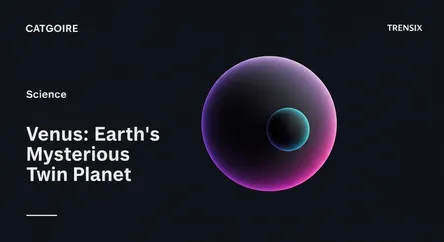Science
Venus: Earth's Mysterious Twin Planet

Discover Venus, Earth's sister planet. Learn why this world of extreme heat and pressure captivates scientists and fuels new space missions.
What is it?
Venus is the second planet from the Sun, often called Earth's "twin" due to its similar size, mass, and composition. Despite these similarities, it is a world of extremes. Venus has a thick, toxic atmosphere composed primarily of carbon dioxide, with clouds of sulfuric acid. This creates a runaway greenhouse effect, making it the hottest planet in our solar system with surface temperatures hot enough to melt lead. The atmospheric pressure at its surface is over 90 times that of Earth, equivalent to being deep in the ocean.
Why is it trending?
Scientific interest in Venus is surging, driven by new discoveries and upcoming space missions. The controversial 2020 detection of phosphine gas in its clouds, a potential biosignature, has reignited the debate about the possibility of microbial life floating in its upper atmosphere. Furthermore, a fleet of new missions is set to explore the planet, including NASA's VERITAS and DAVINCI missions and the European Space Agency's EnVision orbiter. These missions aim to map its surface, analyze its atmosphere, and uncover why Earth's twin had such a different evolutionary path.
How does it affect people?
Studying Venus provides a crucial natural laboratory for understanding planetary climate. Its extreme greenhouse effect serves as a stark warning and a valuable case study for climate scientists modeling Earth's future. By understanding how and why Venus transformed from a potentially habitable world into an inhospitable inferno, we gain vital insights into planetary habitability and the delicate balance that sustains life. This knowledge not only helps protect our own planet but also guides the search for life on exoplanets throughout the galaxy.